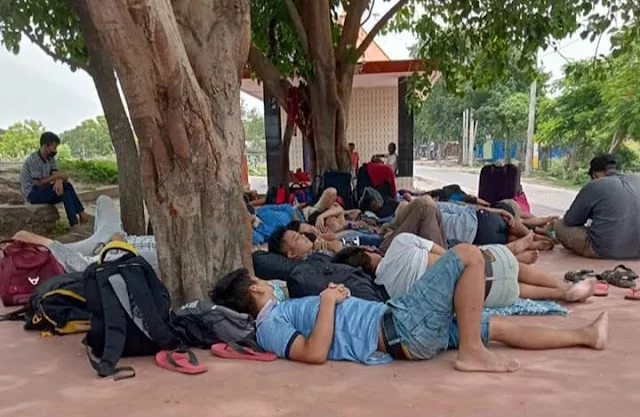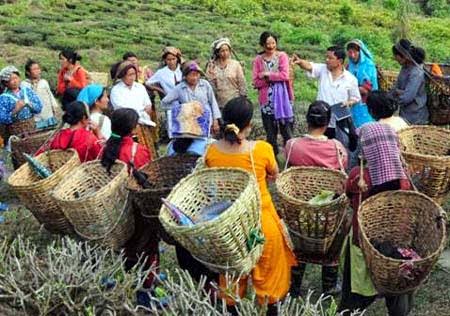 |
| A women works at the Himalaya paper making factory in Kalimpong. |
The Himalayan paper industry in the hills first started in Kalimpong and has its own little history. As soon as one talks about the paper one will find a whiff of Kalimpong’s air in it because such industries have always been supported here. The geographical location, history and the people have always been associated with such industries here.
The paper is crisp and white as any other normal papers, but in comparison to any other white paper the Himalaya paper is much more durable and valuable. Normal white papers are used for normal books and other usual utilities. However, due to the texture and durability of the Himalayan paper, it is basically used for religious manuscripts and other such usage that needs durability.
In Kalimpong, Himalayan papers are being manufactured since the past three decades and two such cottage industry is run by a Bhutia Family. ST Bhutia runs a paper factory at Primtam Road in the town, while his brother runs a similar factory at the SUMI area. ST Bhutia has been running the factory in Primtam Road since 1992 and has been producing Himalayan papers until today. Running under the name of Gyazong Paper Industry, Bhutia caters to the paper’s demand from Sikkim and Bhutan. The factory also provides employment to eight different family and according to Bhutia the industry is a family run business.
Bhutia informed he gained the knowledge about making such papers through a Japanese video documentary and with practice he mastered the art and has not looked back ever since. He said the key to the industry’s survival is the raw material used, and Kalimpong and surrounding areas have abundant supply of such material. Bhutia’s Primtam Road factory currently produces 200-300 sheets per day. Most of the sheets goes to the natural paper market of Sikkim and Bhutan, while some of them are used in other parts of the hills.
Although the industry is limited in the hills, its potential is high due to the easy availability of the raw materials and the available market in Sikkim and Bhutan along with other areas. The Industry like any other cottage industry in the hills does not have a support from the government. Bhitia said he too had applied for help from the government but it never materialised. Moreover the process and procedure required to avail government help is lengthy and difficult, he added. He says he is satisfied with what he has now and does not need any support.
Source: EOI





